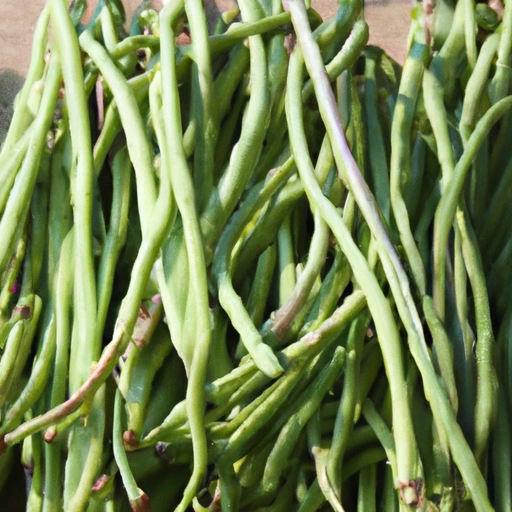Yard-Long Bean
Description

The yard-long bean, also known as the Chinese long bean, asparagus bean, or snake bean, is a vigorous climbing annual vine that produces long, slender pods. These beans are actually legumes, belonging to the family Fabaceae, and are closely related to black-eyed peas and cowpeas. Yard-long beans can grow up to 14-30 inches (35-76 cm or 1-2.5 feet) in length, but are typically harvested at around 12-18 inches (30-45 cm) when they are still tender and before the seeds mature. They have a slightly sweet flavor and a crisp texture, which is retained even after cooking.
Common uses
Yard-long beans are often used in a variety of dishes including stir-fries, curries, salads, and as side dishes. They can also be pickled or used in soups. The beans are typically cut into smaller lengths for cooking and can be eaten both raw and cooked.
Nutritional value
Calories
Yard-long beans are a low-calorie food, with approximately 47 calories per cup (about 100 grams or 3.5 ounces).
Protein
They offer a modest amount of protein, providing about 2.8 grams per cup (100 grams).
Fat
These beans are virtually fat-free, with less than 0.5 grams of fat per cup (100 grams).
Carbohydrates
The carbohydrate content is about 11 grams per cup (100 grams), which includes dietary fiber that aids in digestion.
Vitamins
Yard-long beans are a good source of vitamin C, vitamin A, and several B-vitamins including B2 (riboflavin) and B9 (folate).
Minerals
These beans also contain important minerals like iron, magnesium, phosphorus, and potassium.
Health benefits
With their high fiber content, yard-long beans help promote healthy digestion and may reduce the risk of heart disease. The vitamins and minerals in the beans support overall health, including immune system function, bone health, and energy production.
Potential risks
As with any legume, yard-long beans contain phytates and lectins, which in large amounts may interfere with nutrient absorption and digestion, but cooking the beans thoroughly reduces these compounds.
Common recipes
Yard-long beans are featured in recipes such as Thai spicy salad (Som Tum), Chinese stir-fried long beans, and Indian long bean curry.
Cooking methods
These beans can be prepared through various cooking methods including boiling, steaming, stir-frying, and deep-frying. They can also be grilled or roasted for a smoky flavor.
Pairing with other ingredients
Yard-long beans pair well with ingredients like garlic, ginger, chili peppers, sesame oil, coconut milk, and meats such as chicken, pork, and shrimp.
Summary
Yard-long beans are an incredibly versatile ingredient that can be integrated into a multitude of dishes across various cuisines. Their long pods, tender texture, and sweet flavor make them a delightful addition to meals, providing both nutritional benefits and culinary excitement.